Takafumi Mochizuki is a Japanese craftsman who has combined the Florentine Renaissance craftsmanship tradition with Eastern art, resulting in a style that is certainly distinct. Mochizuki was born in Tokyo in 1979, moved to Florence in 2007 to perfect wood restoration and inlay techniques, and in the same city studied and worked under the guidance of master Renato Olivastri. In 2014, Takafumi opened his workshop in the Oltrarno and founded the Zouganista brand, where he began experimenting with fusing his Japanese roots with Florentine craftsmanship. To date, his mastery of inlay is internationally recognized, and his work ranges from interior design to fashion accessory creation. Having collaborated with brands, designers, and other artisans, Takafumi continues to explore new creative frontiers and carries on a tradition that combines the ancient and the contemporary.
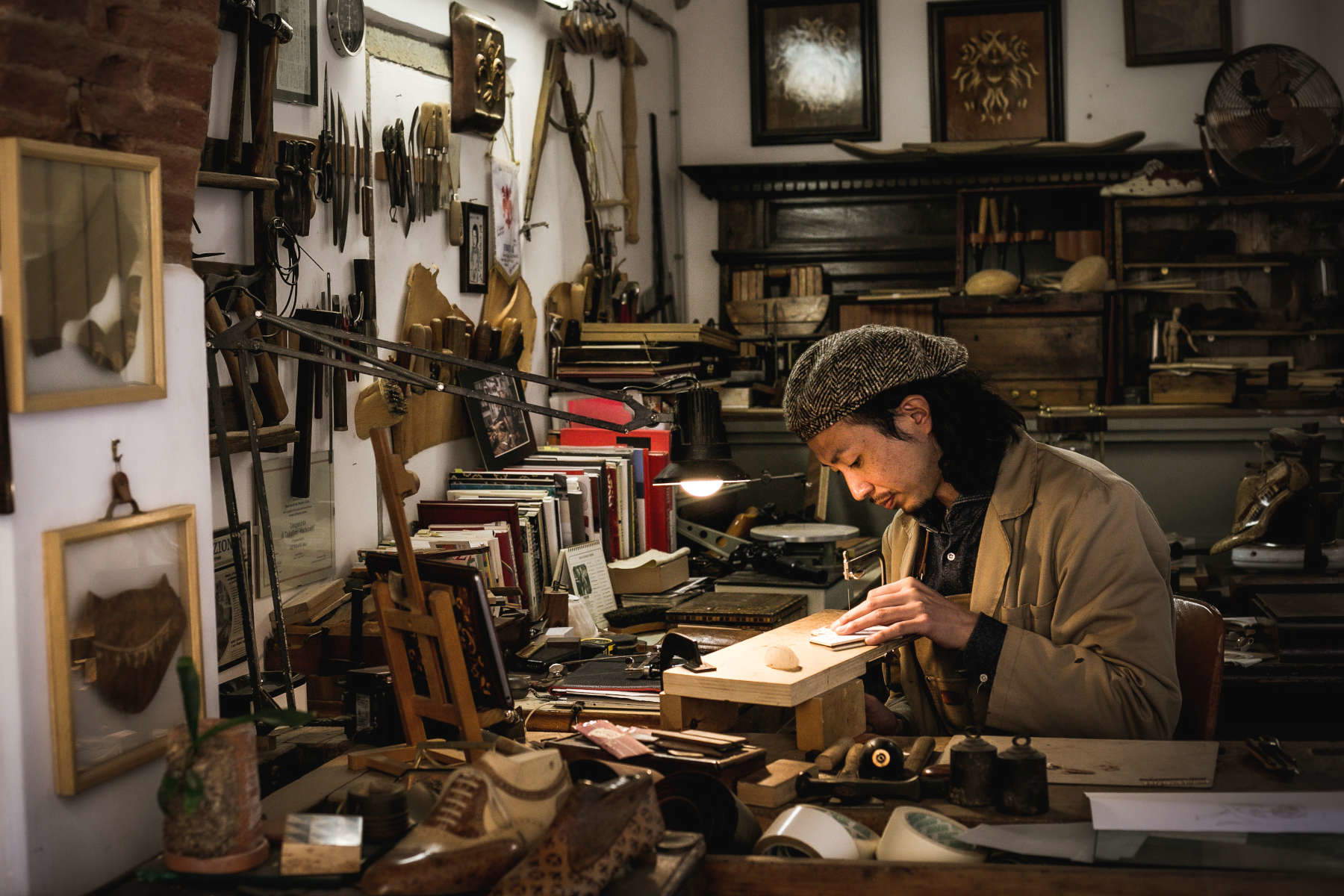
NC. What prompted you to leave Tokyo and move to Florence?
TM. I left Tokyo and moved to Florence because, while working as a furniture salesman, a desire arose within me to fully understand the essence of these artifacts. So I chose Florence to study the art of restoring antique furniture.
How did the idea of creating engravings on your pieces come about?
The idea of decorating my pieces with engravings came from a desire to enhance the main quality of veneer, the material I use and therefore its flexibility. From this cue, I imagined the possibility of decorating curved and complex surfaces. I found interesting the contrast between manual dexterity and the difficulty of replicating similar workings with machines. The more complex the surface becomes, in fact, the more handwork differs from mechanical work.
You learned the art of inlay and furniture restoration in Renato Olivastri’s workshop. What elements of the Florentine method did you therefore integrate with the Japanese zougan (“intarsio” in Italian)technique ?
In Japan I had never practiced wooden inlay; I learned this technique here in Florence, following the local style. In my current works, I have combined this approach with elements of Japanese design and techniques that often have a higher level of detail than Italian ones.
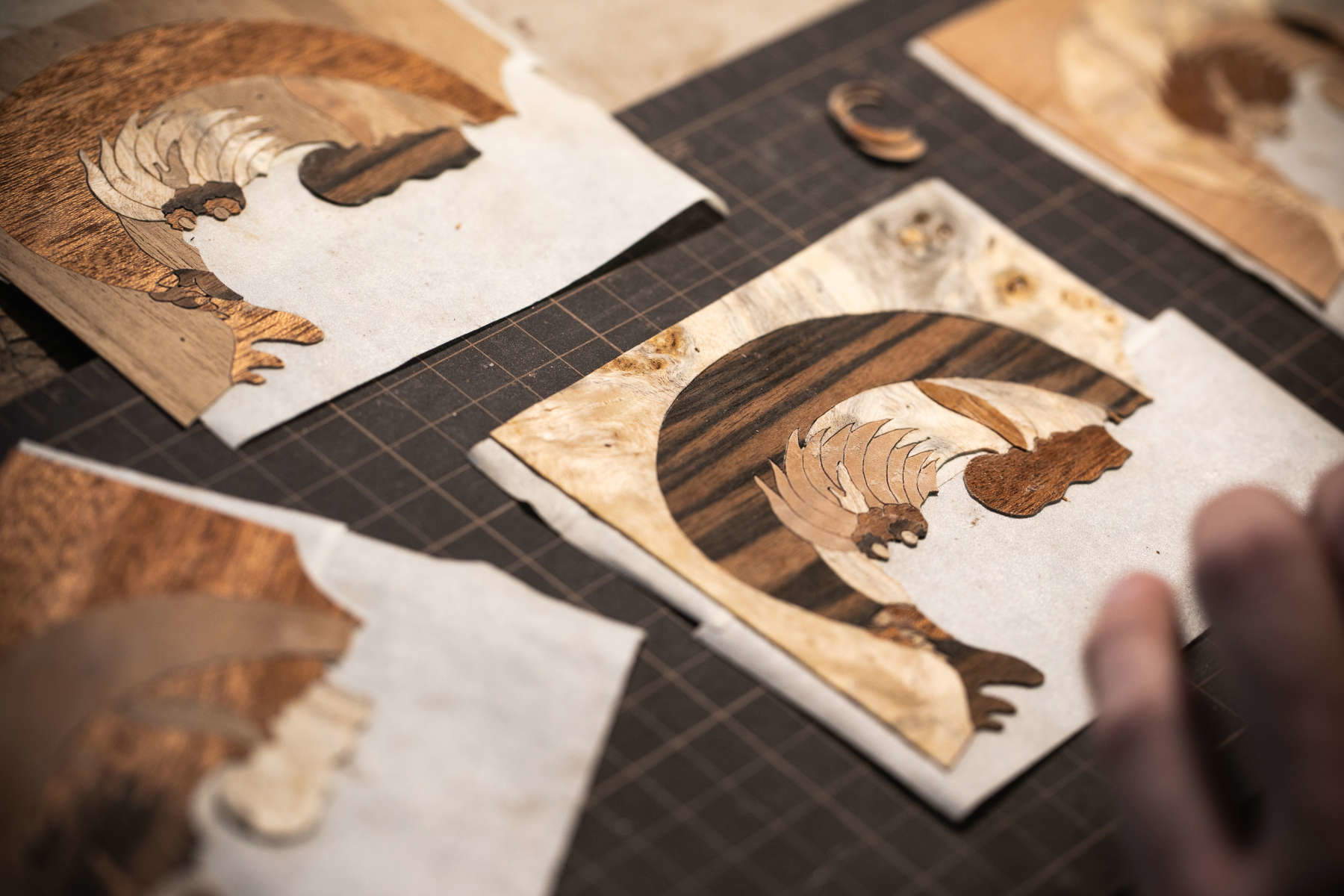
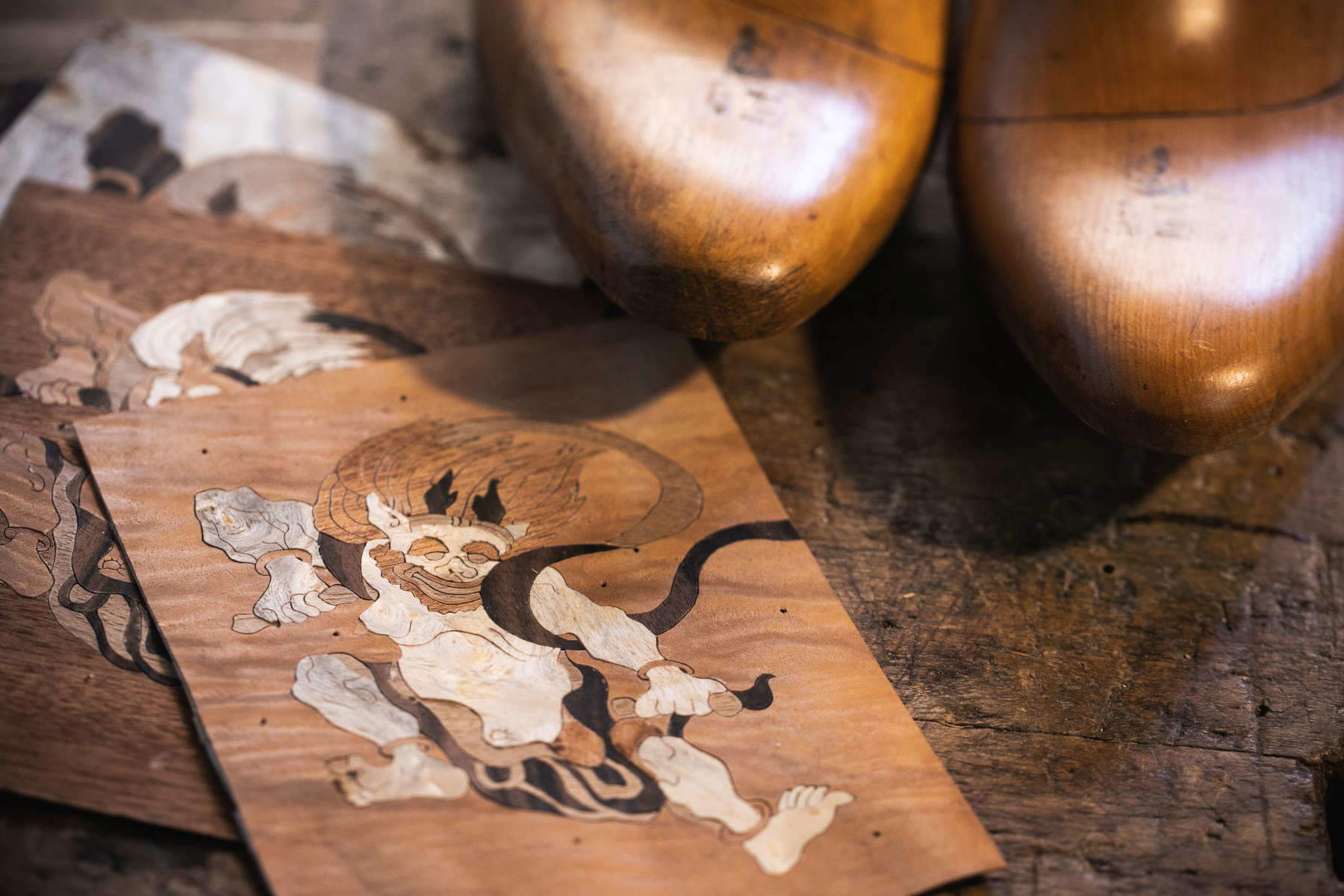
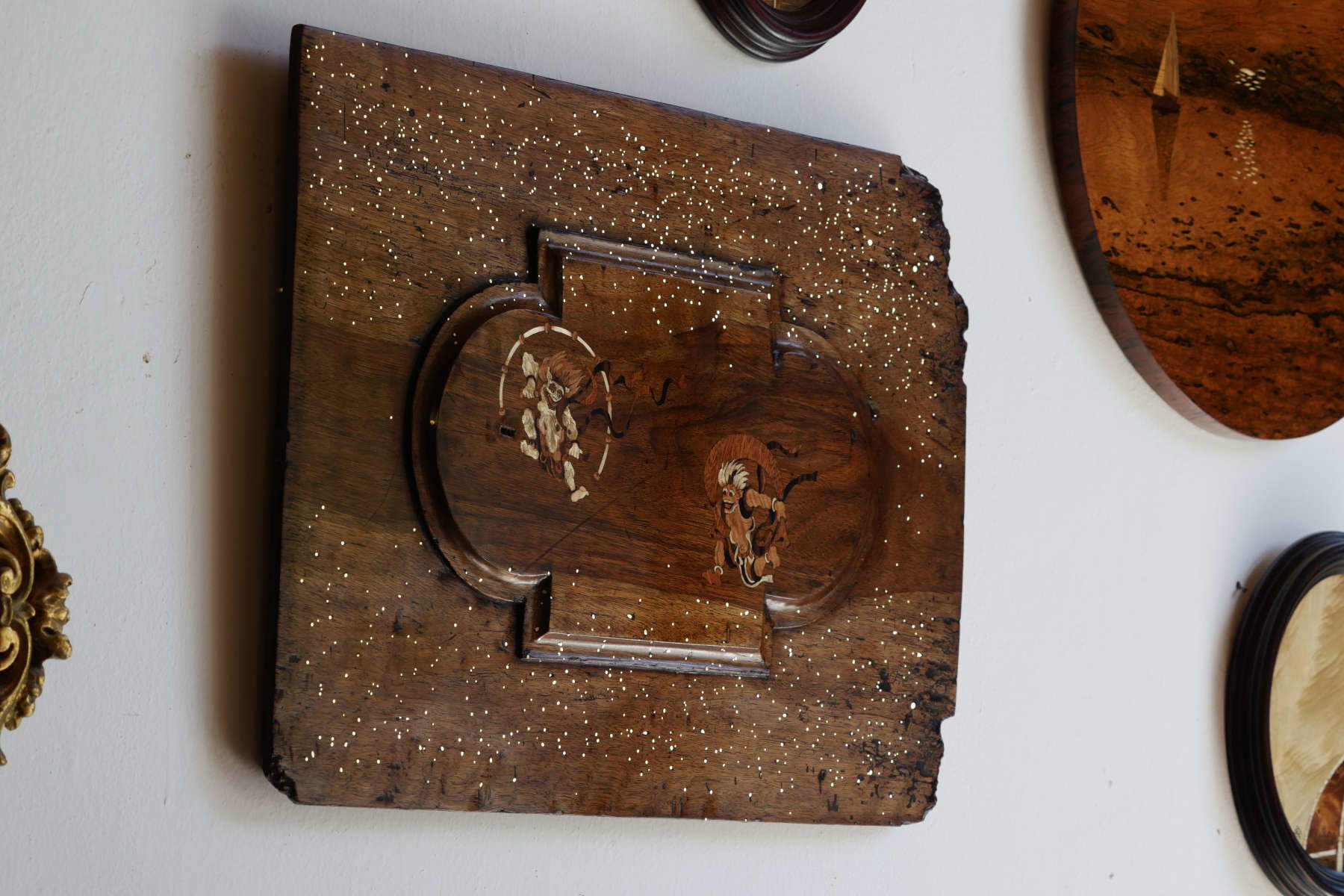
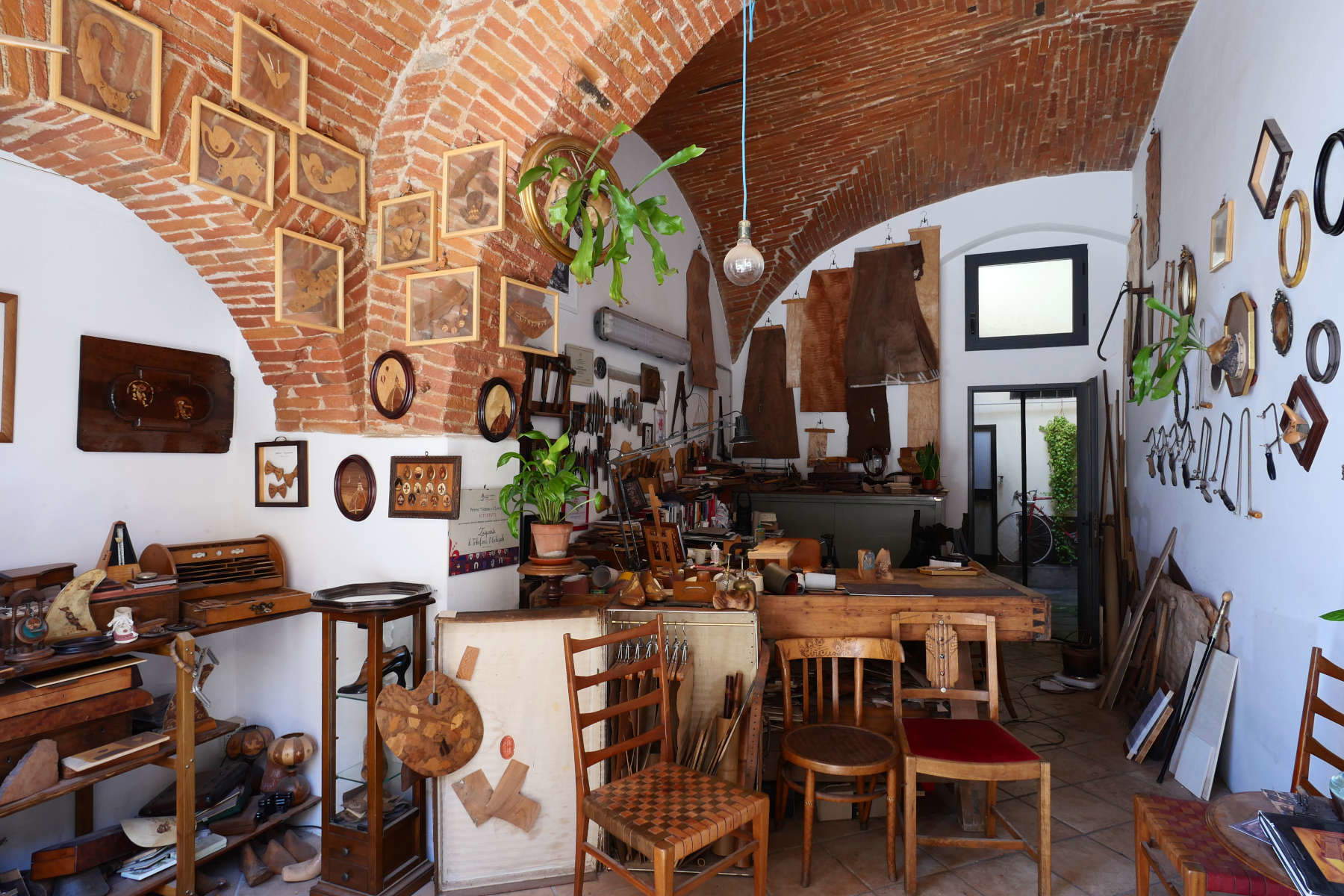
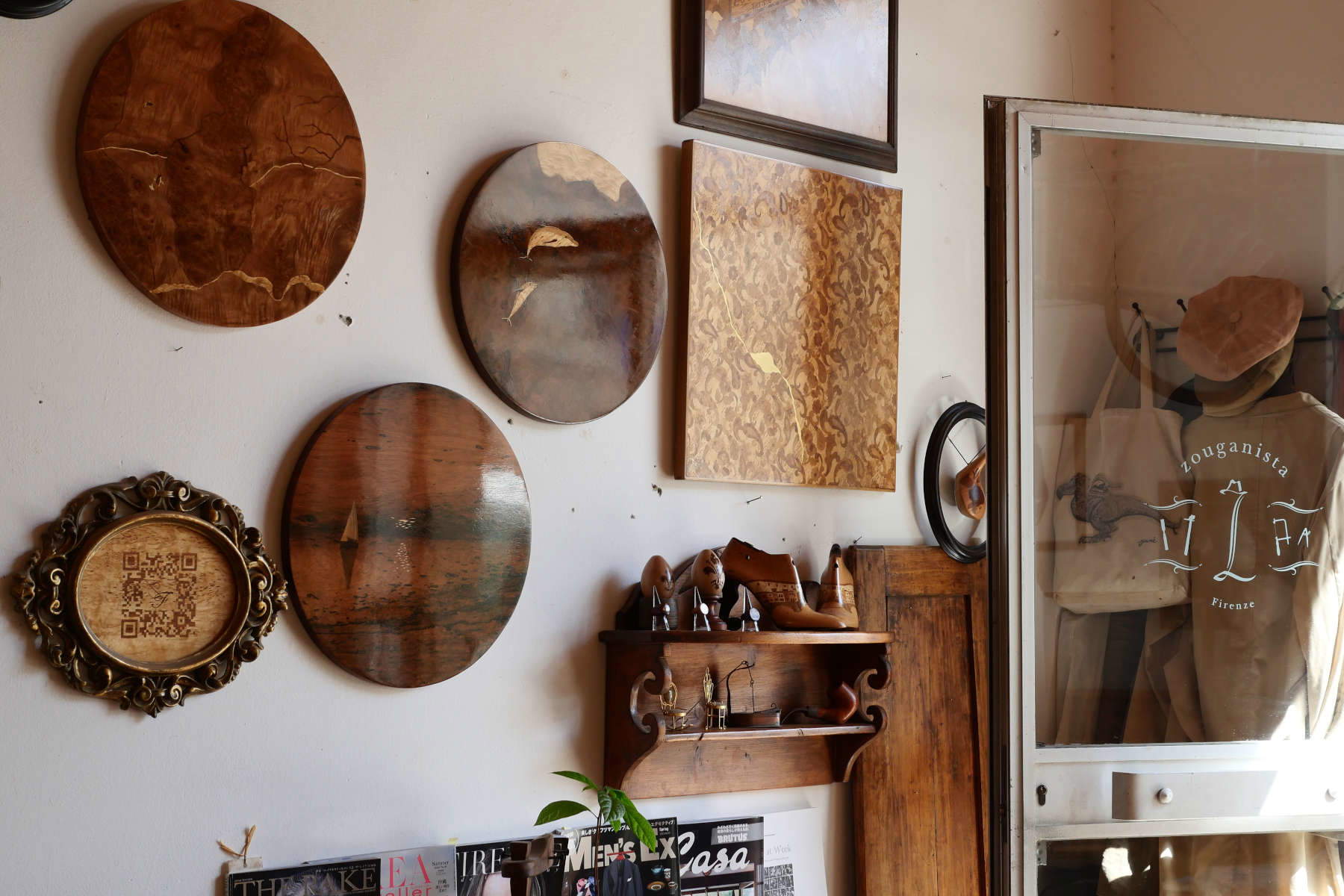
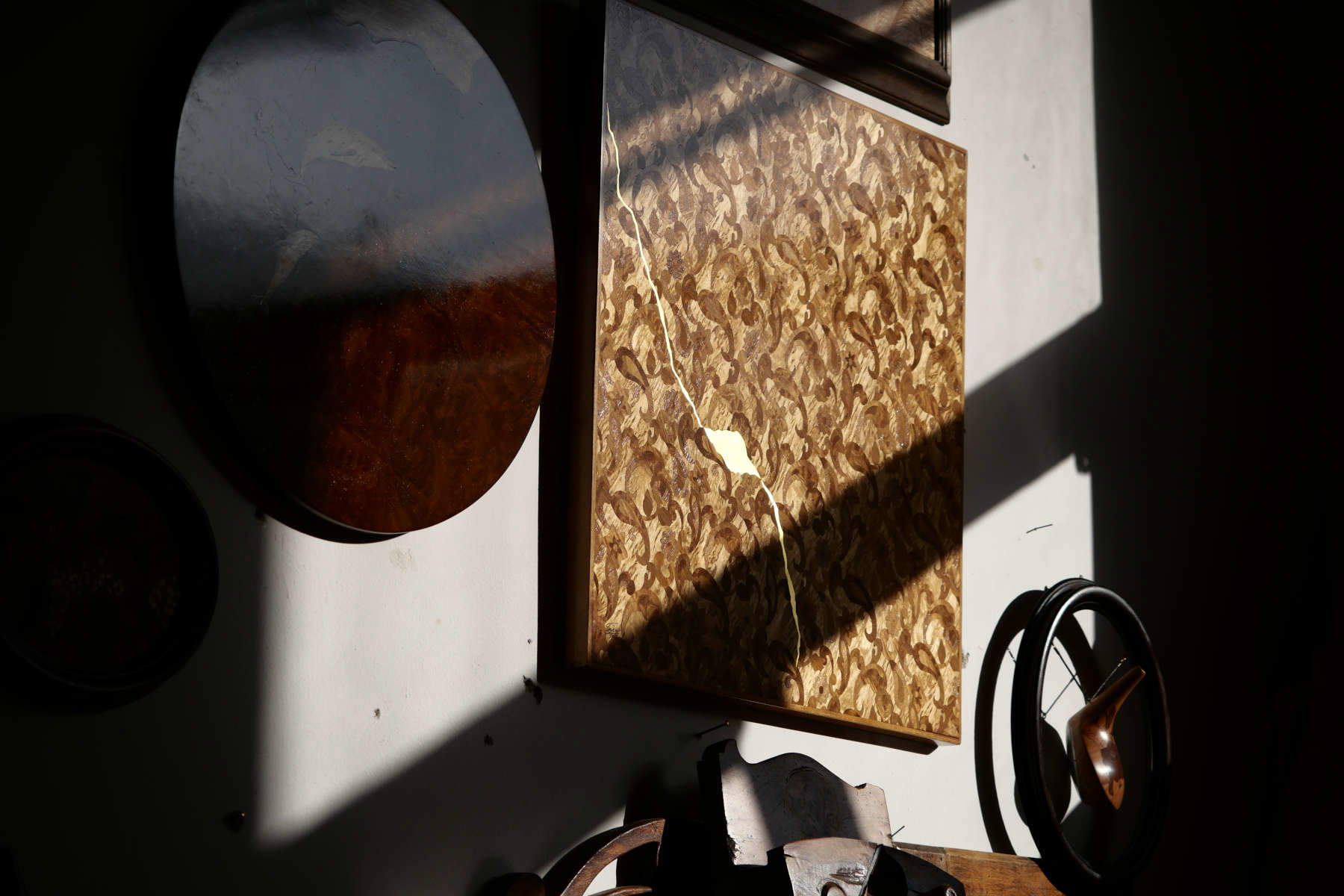
The philosophy of Kintsugi, which enhances the cracks of elements with gilding, is an important part of his practice. How does the Kintsugi philosophy translate into your woodwork?
Kintsugi is a ceramic restoration technique in which broken pieces are repaired by applying gold leaf to the cracks, thus transforming the breakage into an aesthetically valuable element. This philosophy, which enhances the beauty of what is old or imperfect, also inspires my wood works. For example, I insert brass wires into the holes left by woodworm, typical of antique furniture, so that the more they are present, the more they shine like stars and become decorative details. As in kintsugi, adding cracks in a modern design gives my pieces a sense of time and history. In a city like Florence, where the antique is an integral part of everyday life, I find this philosophy fits naturally into my creations and in harmony with their surroundings.
What metallic materials do you choose for your works? By what criteria do you choose to integrate them into your works?
In my works I mainly choose materials such as brass, silver and copper, metals that develop a patina and transform over time. Since wood also changes over time, I find that these materials create a perfect harmony that can give a natural evolution and beauty that is enriched over the years.
Your works combine Japanese influence with the Florentine tradition of marquetry. How do you balance two worlds that are so distant and different?
Japan has a long tradition in the use of wood, so I have found many affinities with Florentine wood inlay. I have integrated the Italian style into my works and employed oriental woods or traditional Japanese decorations on antique Italian furniture. The result is novel creations that do not belong entirely to either the Eastern or Western world.
Time is often a determining factor in such detailed works. How long does it take, on average, to create an inlaid piece?
The time required to create an inlay work varies significantly depending on the number of parts to be cut. For a smaller work such as a painting I take about a week, while for more complex creations such as wooden shoe lasts, the work can take two to four weeks.
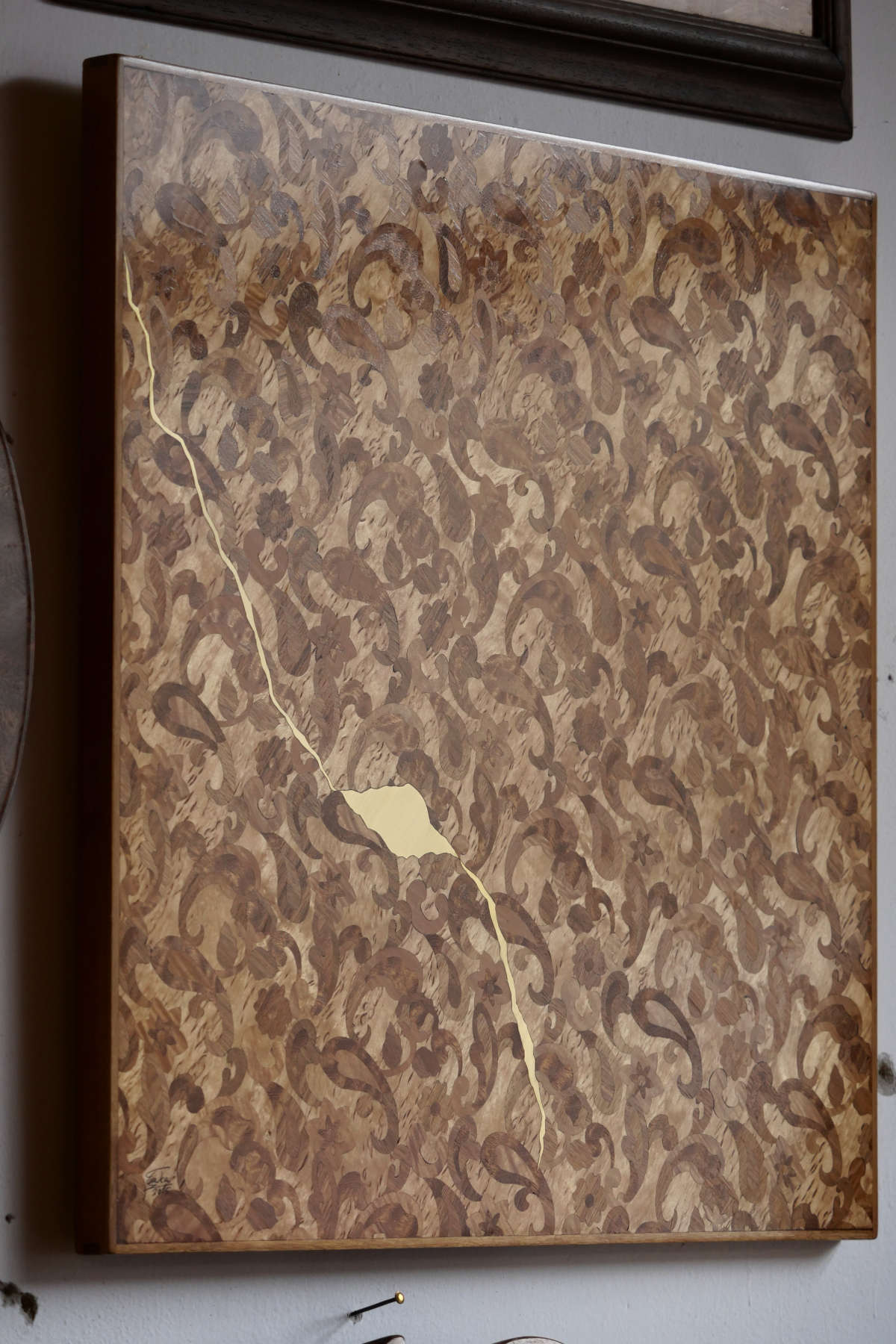
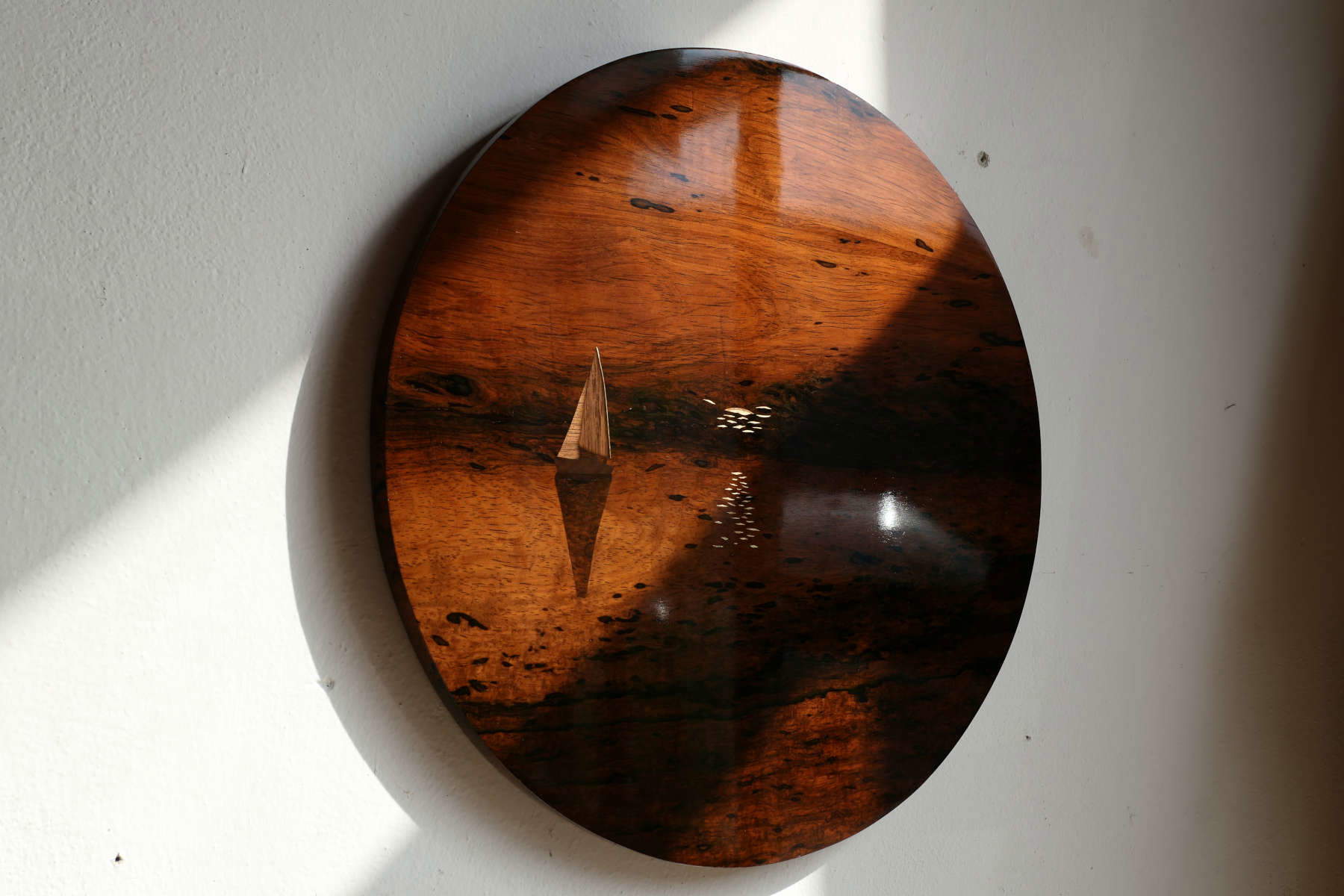
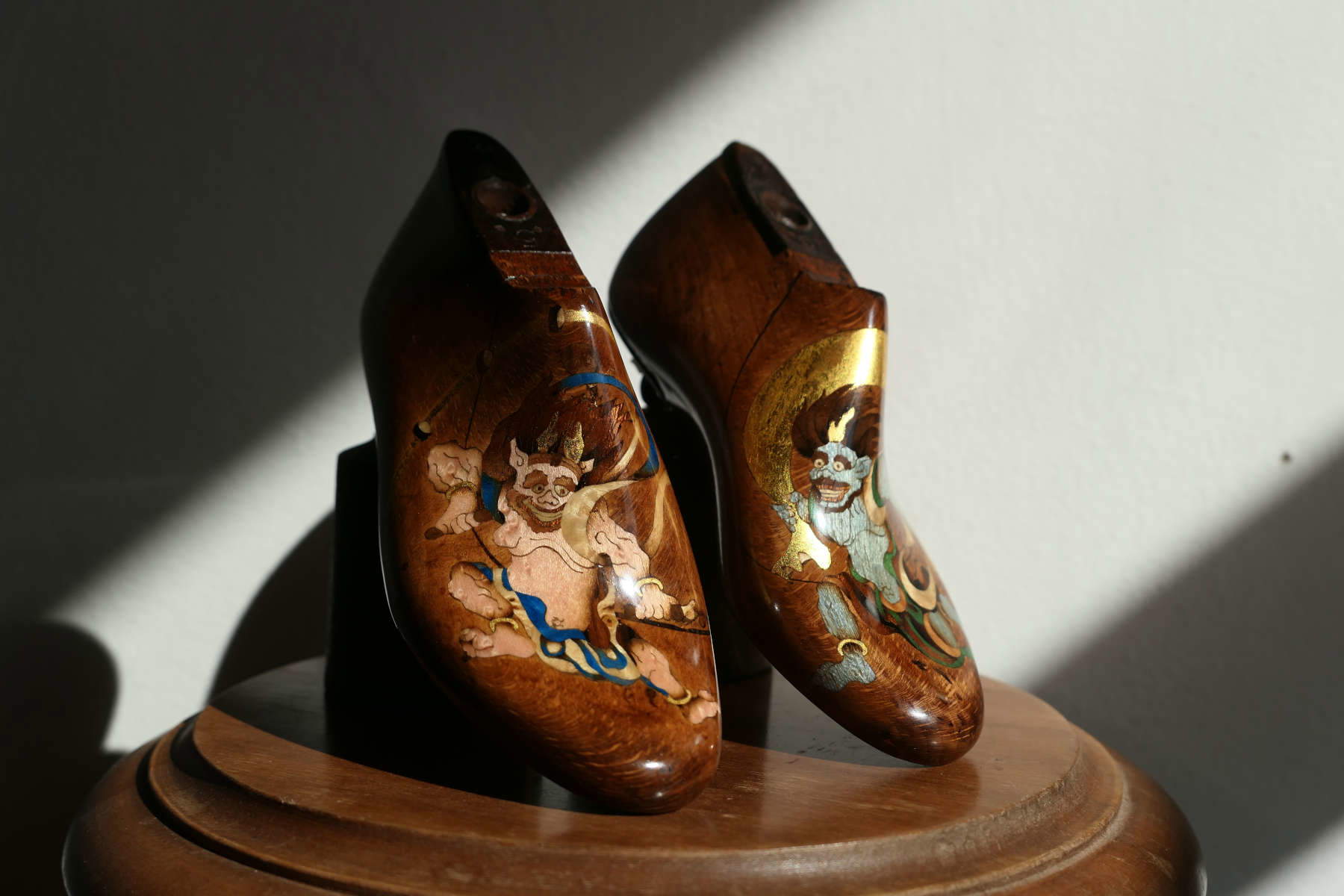
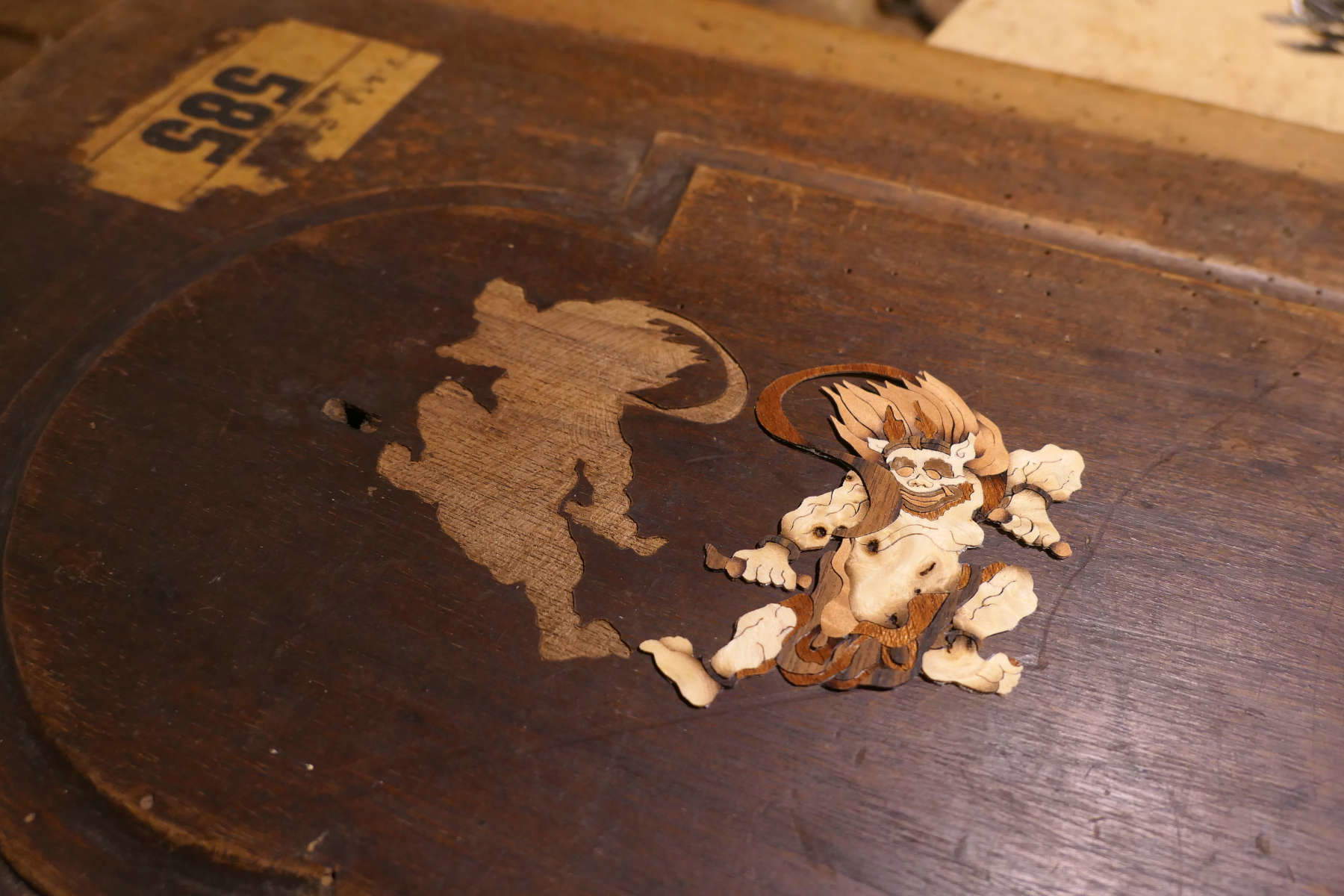
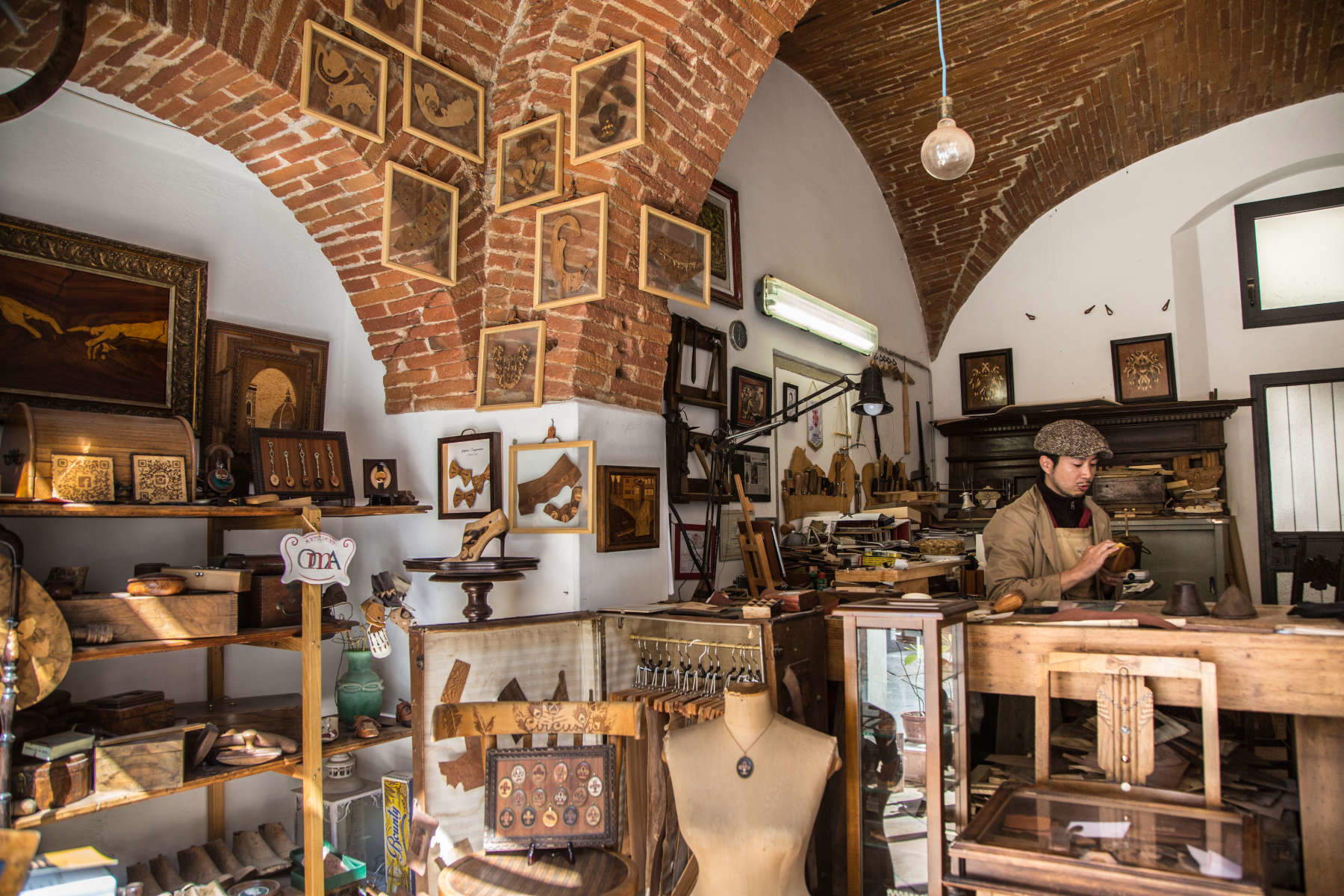
Marquetry needs great precision and patience. Are there particular techniques you have developed for working with complex decorations or materials that are difficult to inlay?
I have not created any new techniques, but I have adapted craft techniques from other crafts to my work. For example, I use the Florentine engraving of goldsmiths, the shaping of leather typical of shoemakers to adhere perfectly to the wooden form, and also different tools of dentists. In Florence, where artisans from different fields work closely together, I had the opportunity to learn these skills and integrate them into my creative process.
Why did you choose to apply inlay on objects such as shoes, hats and clothes hangers? What do you want to communicate with this choice?
Wood inlay is a technique historically used to decorate interiors. In reality, changes in lifestyle have reduced the opportunities for its application. Therefore, I decided to promote marquetry not only in interior design but also in the fashion industry, convinced that it can give rise to new creative ideas. For this reason, I make fashion objects such as shoes, hats and hangers. My goal is to enhance and rediscover this valuable craft technique.
Your workshop in San Frediano has become a reference point for Tuscan craftsmanship. How has inlay and craftsmanship evolved in recent years in Florence?
My workshop in San Frediano is celebrating ten years this year, but in that time the number of artisans has steadily decreased. In Florence, only a few still practice marquetry. In any case, thanks to social media, in recent years students and young people have begun to rediscover crafts and desire to learn them. I am excited about the possibility of collaborating with this new generation and creating original and innovative works together with them.
 |
| Kintsugi and Florentine inlay. The craftsmanship of Takafumi Mochizuki |
Warning: the translation into English of the original Italian article was created using automatic tools. We undertake to review all articles, but we do not guarantee the total absence of inaccuracies in the translation due to the program. You can find the original by clicking on the ITA button. If you find any mistake,please contact us.